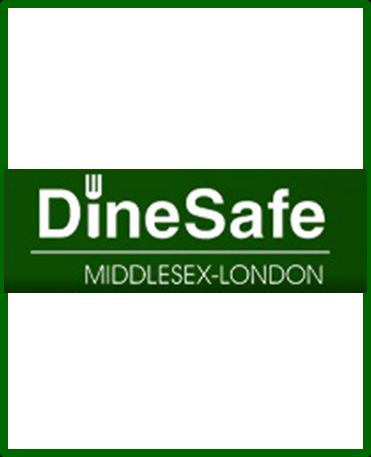Why do food premises get inspected?
Under the Health Protection and Promotion Act (R.S.O. 1990, c. H.7),1 the Middlesex-London Health Unit has the responsibility and the power to inspect all food premises in the City of London and in Middlesex County. Food safety inspections are part of the effort to reduce the number of foodborne illnesses that occur every year.
Part of the role of Public Health Inspectors is to make sure that food premises meet the minimum standards as set out in Ontario Food Premises Regulation (O. Reg. 493/17).2
It is the responsibility of the owner, operator and every food handler to make sure that they are following the requirements of the Ontario Food Premises Regulation (O. Reg. 493/17)2 at all times, and to correct problems as they occur.
Back to top
Types of Inspections:
Routine Inspections
Re-inspections
If a member of the public has concerns about the food handling or conditions at a food premises in Middlesex-London, they can file a food safety complaint with the Middlesex-London Health Unit. A Public Health Inspector will follow up on the complaint and in some cases an inspection may be done at the same time.
Back to top
Infractions
Compliance with food safety laws is the ongoing responsibility of food premises operators. When an error is made that breaks the law it is called an infraction. It is not unusual in the fast-paced, round-the-clock environment of today's food service industry for food premises to occasionally have mechanical breakdowns, personnel problems, or other unforeseen events that can lead to non-compliance items. Because Public Health Inspectors generally do their inspections unannounced, they will observe and record these infractions during routine inspections.
When infractions are noted, it is the responsibility of the operator to take measures to prevent any risk to the public and to fix the problem as soon as reasonably possible. When non-compliance is an ongoing problem, Public Health Inspectors have the authority to take legal actions (i.e. give tickets, serve a summons, throw out food) to ensure ongoing compliance with food safety laws. Visit the Middlesex-London Health Unit's Disclosure website to view inspection reports and legal activities.
Back to top
How often do food premises get inspected?
Inspections are generally surprise visits and the number of routine inspections that happen each year depend on the profile and performance of the food premises. Every food premises is given a risk rating (high, moderate or low). Some of the things that are used to decide the risk rating in the risk categorization of food premises are:3
Profile factor: Who they serve
-
Facilities that serve priority populations, those that are experiencing and/or at increased risk of poor health outcomes (e.g. the elderly, the young, or immunocompromised individuals), are higher risk than those that serve the general public.
Profile factor: What they prepare and serve
Profile factor: What they have to do to serve it
-
The more steps that happen in the food preparation process, the more the chance that something can go wrong. Extensive food handling/preparation would include a number of steps before service such as cooking, hot holding, cooling, and reheating of foods. Food premises with extensive food handling will be given a higher risk rating.
Performance factor: Compliance history
Performance factor: Foodborne illness/outbreak history
Performance factor: Food safety management plans
- If a facility has a documented, systematic approach to identify and assess hazards and risks associated with the facility, or a third party quality assurance company, or demonstrates some monitoring of food safety critical control points, the risk rating will be lower.
Performance factor: Food safety knowledge and training
- If at least one certified food handler is on-site and/or food handlers demonstrate safe food handling practices, the risk rating will be lower.
Please view the Operational Approaches for Food Safety Guideline, 2019 (PDF 620KB) for more information on these profile and performance factors.
Each food premises is then visited based on the risk rating. The number of routine visits each food premises gets per year are set out by the Food Safety Protocol, 2019 (PDF 457KB)4 under the Ontario Public Health Standards and are as follows:
High risk food premises:
- Inspected at least three times per year.
Moderate risk food premises:
- Inspected at least two times per year.
Low risk food premises:
- Inspected at least one time per year, with an allowance for low risk premises that offer for sale only pre-packaged non-hazardous food to be inspected once every two years.
Back to top
Additional Information
To speak to a Public Health Inspector on the Environmental Health Team about food safety inspections, please call:
